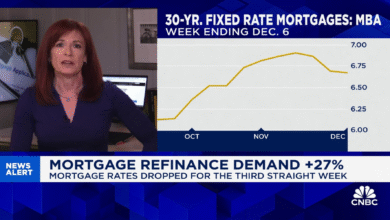Social Security COLA 2026: Understanding the Key Changes

As we approach 2026, the Social Security COLA (cost-of-living adjustment) is poised to be the lowest increase in five years, reflecting the ongoing effects of inflation on American households. Recent data indicates that while inflationary pressures have lessened since the pandemic, the financial strain on retirees and disabled individuals remains a significant concern. With projections estimating a modest 2.4% increase, beneficiaries could see their Social Security benefits struggle to keep pace with rising costs, particularly in areas such as drug prices and day-to-day living expenses. This situation highlights the importance of understanding how inflation affects retirement income and benefits. The upcoming year could bring unexpected changes to this outlook, especially with external factors like tariffs looming on the horizon and their potential to reshape consumer pricing.
As we look toward the forthcoming Social Security COLA for 2026, it’s crucial to grasp how this annual adjustment influences the financial landscape for millions of Americans. The cost-of-living increase, which aims to keep retirement incomes aligned with inflation, is essential for ensuring that Social Security benefits remain effective against rising consumer prices. With recent government reports showing a drop in inflation rates, this next adjustment may be one of the smallest recorded in recent years. However, evolving elements such as tariffs and fluctuations in healthcare costs could still stir the economic pot, potentially altering the benefits recipients rely on. Understanding these dynamics will provide insight into the broader implications for retirees during an era of shifting economic conditions.
Understanding Social Security COLA 2026
The Social Security cost-of-living adjustment for 2026 (COLA 2026) is projected to be the lowest since 2021, with a forecast increase of just 2.4%. This drop in the adjustment reflects the easing pace of inflation, which has significantly decreased from the highs marked during the pandemic. The critical relationship between inflation and the COLA is evident, as the adjustment is calculated based on the fluctuation in consumer price indexes, especially the Consumer Price Index for Urban Wage Earners and Clerical Workers (CPI-W). Should inflation remain stable or continue to decline, beneficiaries may find their Social Security benefits not keeping up with rising costs of goods and services, ultimately affecting their purchasing power and retirement income.
Experts are apprehensive about this projected increase since external economic factors can cause fluctuations in inflation rates. For instance, international tariffs on imports could potentially elevate consumer prices, which in turn may impact the Social Security COLA calculation. As tariffs are implemented, prices for everyday goods may rise, prompting a recalculation of the COLA that could provide a higher adjustment for beneficiaries. Additionally, changes in inflation can influence long-term retirement planning for many Americans; thus, it is important for individuals to stay informed about economic changes that may affect their Social Security benefits in the coming years.
Factors Influencing Retirement Income in 2026
In 2026, retirees will face various economic factors that may impact their overall retirement income. While the projected COLA increase remains modest, elements like tariffs and prescription drug pricing can substantially affect the financial well-being of seniors. With the potential for imported goods to become more expensive due to tariffs, retirees living on fixed incomes may strain to cover everyday expenses. This scenario underscores the importance of understanding how external economic policies can reciprocally influence their financial stability.
Moreover, the rising costs of prescription drugs continue to pose a significant challenge, especially as discussions surrounding drug pricing reform evolve. Although the predicted changes in drug prices may not directly affect the Social Security COLA itself, they are likely to have a profound impact on retirees’ budgets. A decrease in medication costs can alleviate some financial pressure, allowing seniors to allocate funds towards other essential expenses. Therefore, tracking both local and national policies that govern drug pricing could be as crucial as understanding COLA increases.
The Impact of Inflation on Social Security Beneficiaries
Inflation plays a critical role in determining the financial health of Social Security beneficiaries. As inflation rates fluctuate, so does the cost-of-living adjustment (COLA) that beneficiaries receive each year. In recent times, inflation has been relatively calm, but this sense of stability may not last. The current projections suggest that in 2026, the COLA may yield a modest bump, which could struggle to keep pace with the rising prices in essential goods and services. As such, the risk may grow for retirees to experience a decrease in their purchasing power over time.
Moreover, the slow adjustment in Social Security benefits could lead to significant challenges for retirees who rely on these payments as their primary source of retirement income. Increased costs for everyday necessities, such as food and healthcare, may not be matched by the small inflation-adjusted increases in Social Security benefits. Therefore, understanding the interplay between inflation and COLAs becomes crucial for retirees, as they plan their budgets and make financial decisions to ensure their needs are met in an evolving economic climate.
Exploring the Connection Between Tariffs and Retirement Funds
As the U.S. government implements tariffs on certain imports, the consequences could ripple through the economy, impacting inflation rates and the cost of living. Increased prices due to tariffs could lead to a higher inflation measurement, which might increase the Social Security cost-of-living adjustment (COLA) for 2026. For seniors relying on fixed Social Security payments, this could provide a crucial buffer against the rising costs of everyday living. Economists predict that these tariffs could negate the idyllic period of low inflation, challenging the financial landscape for retirees.
However, the immediate effect of these tariffs on Social Security COLA remains uncertain, as policymakers will closely monitor inflation trends in the coming months. If tariffs lead to noticeable increases in consumer prices, beneficiaries may see a recalculation of their expected COLA increase. It highlights the importance of understanding how global trade policies directly influence local economics and the financial health of retirees in the United States.
Prescription Drug Costs and Their Influence on Seniors
As healthcare costs continue to rise, the burden of prescription drug prices has become a pressing concern for many seniors. While recent executive orders aim to align U.S. drug pricing with other countries, the impact of these changes on the Social Security cost-of-living adjustment (COLA) is complex. Although experts predict that proposed reforms may not directly influence the upcoming COLA figures, the potential reduction in drug costs could provide significant relief for retirees. This could free up funds for other essential needs, making it critical that seniors stay informed about evolving healthcare policies.
Additionally, the relationship between prescription drug costs and Social Security benefits underscores the precarious balance many retirees must maintain in their budgets. If drug prices are brought down effectively, seniors may feel less pressure on their monthly expenditures. Consequently, understanding the interplay between health policies and Social Security can directly shape how retirees manage their finances—potentially resulting in better financial outcomes during their retirement years.
Anticipating Cost-of-Living Adjustments in Uncertain Times
As we look ahead, analyzing the uncertain environment surrounding Social Security cost-of-living adjustments becomes paramount. With the COLA for 2026 projected to be low amid declining inflation, seniors must prepare for potential volatility in their financial planning. The interplay of inflation, tariffs, and the broader economic picture will dictate how increases in the COLA are formulated. Looking ahead, beneficiaries must consider these variables when planning their long-term retirement strategies.
Furthermore, it is essential to recognize that regular monitoring of fiscal policies and upcoming economic reports will provide insights into likely changes in the Social Security COLA. As this adjustment plays a vital role in securing financial stability for many seniors, being proactive and informed can empower them to navigate the changing landscape effectively. Understanding the elements influencing these adjustments ensures that retirees remain prepared for the financial realities they may face in the years to come.
The Future of Social Security Benefits in 2026 and Beyond
Anticipating the future of Social Security benefits is essential for all beneficiaries, especially with the projected COLA for 2026 suggesting lower support for seniors. Understanding how economic recovery, inflationary pressures, and geopolitical factors, such as tariffs, will interplay remains crucial for future planning. Factors that affect cost-of-living adjustments and retirement income can significantly alter the day-to-day financial realities for retirees. To navigate these challenges successfully, beneficiaries must stay informed.
Moreover, discussions around adjusting policies for Social Security in response to economic fluctuations highlight the importance of advocacy and awareness within the community of beneficiaries. Engaging with local representatives to address issues around COLA and other retirement-related policies can lead to informed decisions that will benefit seniors nationwide. Awareness of future adjustments—and their potential impacts—enables retirees to make necessary adjustments and prepare for an economically uncertain future.
Planning for Financial Stability in Retirement
As retirees approach their later years, financial stability becomes paramount. While Social Security serves as a foundation, it is essential to integrate additional income sources and savings into overall retirement planning. Understanding how projected COLA increments, like those for 2026, will influence retirement budgets can help retirees create effective financial strategies. Moreover, scrutinizing factors such as inflation rates and healthcare costs, particularly around prescription drugs, becomes imperative.
Retirement planning should encompass a holistic view of expenses, income, and potential risk factors that could disrupt financial stability. By monitoring changes in costs of living and adjusting expenditure accordingly, retirees can navigate challenges more effectively. As new policies emerge and external factors evolve, remaining adaptable and informed will be key in securing long-term financial health in retirement.
The Role of Inflation in Retirement Savings
Inflation’s ongoing impact on retirement savings cannot be overstated, as individuals must prepare for economic shifts across their retirement years. With inflation at its current levels, it’s essential for retirees to consider how lower Social Security COLA increases may affect their overall financial security. The adjustments, which are designed to reflect the increasing costs of living, must be closely monitored, especially in light of tariffs and external economic pressures influencing consumer price indexes.
Understanding the interplay between inflation and retirement savings equips individuals with the knowledge to construct balanced budgets and savings schemes. As projected cost-of-living adjustments dictate changes in Social Security benefits, remaining vigilant about inflationary effects will empower seniors to take actionable steps in safeguarding their retirement income. Long-term planning and continuous awareness of economic trends will ultimately contribute to a more secure financial future for retirees.
Frequently Asked Questions
What is the projected Social Security COLA for 2026?
The projected Social Security cost-of-living adjustment (COLA) for 2026 is currently estimated to be around 2.4%. This would represent the lowest annual increase since 2021, as inflation rates have stabilized compared to previous years.
How does inflation affect the Social Security COLA for 2026?
Inflation plays a critical role in determining the Social Security COLA for 2026. The annual adjustment is based on the Consumer Price Index for Urban Wage Earners and Clerical Workers (CPI-W). If inflation remains low, the COLA may also be modest, as seen in the projected 2.4% increase for 2026.
Why might the Social Security COLA for 2026 increase before the official announcement?
Factors such as tariffs on imported goods and potential changes in prescription drug prices could lead to an increase in the Social Security COLA for 2026. If tariffs cause consumer prices to rise, the inflation rate may also increase, potentially affecting the COLA announcement made by the Social Security Administration in October 2025.
How do tariffs impact the cost-of-living adjustment for Social Security benefits in 2026?
Tariffs can result in higher consumer prices, which might lead to an increased inflation rate. Consequently, if inflation rises due to tariffs, the Social Security COLA for 2026 could also see an upward adjustment from the current 2.4% projection.
Will changes in prescription drug prices affect my Social Security benefits in 2026?
While changes in prescription drug prices might not directly affect the Social Security COLA estimate, they can impact retirees’ overall budgets. If drug prices decrease, it may provide more financial relief for beneficiaries even if the COLA remains modest.
When will the official Social Security COLA for 2026 be announced?
The official Social Security cost-of-living adjustment for 2026 is typically announced by the Social Security Administration in October 2025. This announcement will reflect the final calculations based on inflation data.
How is the Social Security COLA calculated each year?
The Social Security cost-of-living adjustment is calculated by comparing inflation data from the third quarter of the current year to the same period of the previous year. The difference in the Consumer Price Index for Urban Wage Earners and Clerical Workers (CPI-W) determines the annual increase.
What implications does a low Social Security COLA have for retirees?
A low Social Security COLA, such as the projected 2.4% for 2026, can significantly impact retirees’ purchasing power, as it may not adequately keep pace with rising living costs, including inflation and healthcare expenses.
What was the last significant COLA increase before 2026?
Before the projected 2.4% increase for 2026, the last significant Social Security COLA was a 2.5% increase granted in 2025, illustrating a trend of declining adjustments in recent years.
What should retirees know about the Social Security COLA for 2026?
Retirees should be aware that the Social Security COLA for 2026 is projected to be modest at 2.4%, the lowest in five years. Factors such as tariffs and prescription drug pricing may influence this adjustment leading up to its official announcement.
| Key Point | Details |
|---|---|
| Projected COLA | The Social Security COLA for 2026 is projected at 2.4%, lower than the 2.5% increase in 2025. |
| Inflation Trends | Recent government data shows inflation has decreased, contributing to a smaller COLA for Social Security beneficiaries. |
| Influencing Factors | Tariffs could raise inflation rates, while prescription drug price controls could affect retirees’ budgets. |
| CPI-W Comparison | The Consumer Price Index for Urban Wage Earners and Clerical Workers (CPI-W) increased by 2.1% over the past year. |
| Future Projections | The final COLA for 2026 will be confirmed by the Social Security Administration in October. |
Summary
The Social Security COLA 2026 is anticipated to be the lowest annual increase in recent years due to a decrease in inflation rates. As inflation eases since the highs experienced during the pandemic, the projected 2.4% adjustment reflects the ongoing economic adjustments that retirees may face in their budgets. However, ongoing factors such as tariffs and the regulation of prescription drug prices could still cause fluctuations in the overall cost of living, necessitating close observation as new data emerges.




